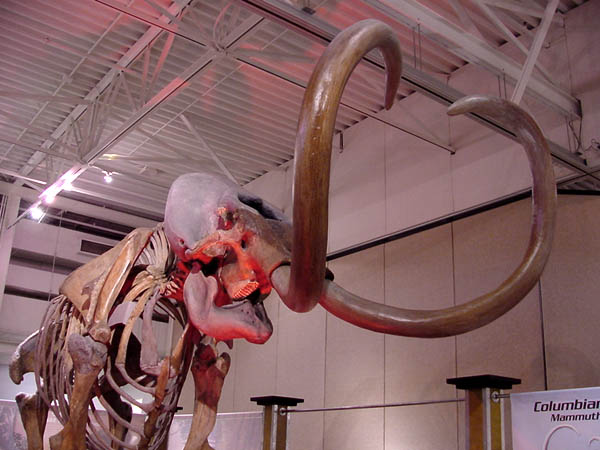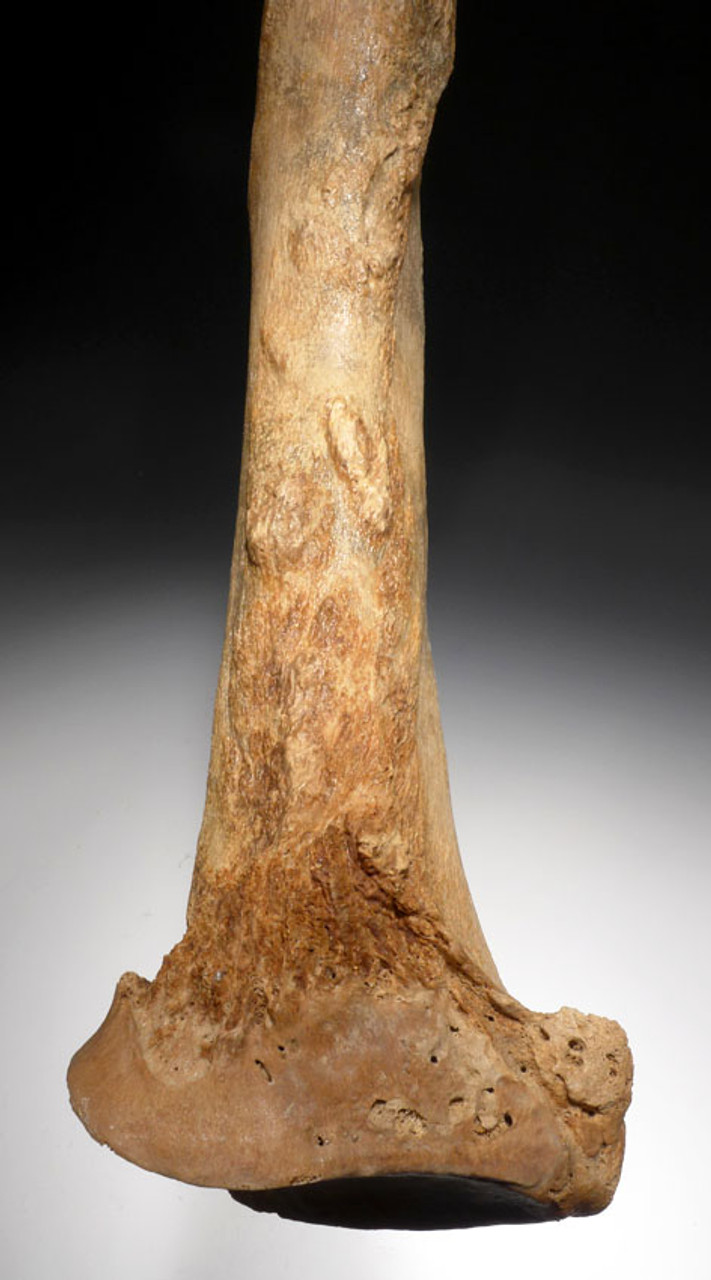Product Description
With this offering, we present a VERY RARE fossil bone of the Columbian Mammoth, known scientifically as Mammuthus columbi. This is a RADIUS LOWER ARM BONE and it is an extraordinary specimen with spectacular bone detail and fully preserved, dense end joint surfaces on both ends! Columbian Mammoth fossils of this type and quality are SUPER RARE. The fossils in general, are rare, with most found being incomplete molar teeth. Bones and tusks are very scarce and a COMPLETE UNBROKEN MAJOR LIMB BONE such as this, is truly a prize find! The unusually light color and high level of quality preservation is due to being found in a freshwater spring off the river. This very rare specimen has NO REPAIR AND NO RESTORATION and is 100% original.
This bone would be an ideal candidate for a museum Ice Age exhibit. Dramatic bone grain and detail along with its unique anatomy makes this a perfect bone to demonstrate the unique features of the Mammoth. The bone has been sealed in a chemical hardener to preserve its condition. (ALL Ice Age mammal fossils are still mostly in an organic state. They are NEVER petrified which would require tens of millions of years). Perfect to exhibit with Primitive Man tools and artifacts since these beasts played such an important part in so many ways of the lives of prehistoric humans in North America. Columbian Mammoth fossils are far more scarce than European Woolly Mammoth fossils.
Emerging 55 million years ago, the group of mammals called Proboscideans are identified by the presence of tusks and a trunk and include mammoths, mastodons and elephants. The oldest mammoth remains have placed the beginnings of the beasts in Africa but eventually, they migrated to Europe and Asia.
The Columbian Mammoth (Mammuthus columbi) was a massive Ice Age beast and a descendant of Mammuthus meridionalis, an earlier species that migrated across the Bering Land Bridge into North America around one million years ago. The Columbian Mammoth ranged from Alaska to Florida and as far south as Mexico and Central America. While most think of the Woolly Mammoth to be large, it was not and especially when standing alongside the giant Columbian Mammoth. The Columbian Mammoth stood almost 14 feet at the shoulder as opposed to the Woolly Mammoth who stood only about 9 feet at the shoulder. The Columbian Mammoth weighed about 8-10 tons and could consume about 700 pounds of vegetation a day. The life span for a Columbian Mammoth was 60 to 80 years. The Columbian Mammoth was the first immigrant lineage of mammoths into North America. They became extinct 11,000 years ago along with all other Proboscideans in North America. Associated Paleo-Indian stone tools have been found at some fossil sites indicating these massive beasts were hunted by early North American Indians.
CLICK HERE TO LEARN MORE ABOUT THE COLUMBIAN MAMMOTH

 US DOLLAR
US DOLLAR
 EURO
EURO
 AUSTRALIAN DOLLAR
AUSTRALIAN DOLLAR
 CANADIAN DOLLAR
CANADIAN DOLLAR
 POUND STERLING
POUND STERLING




















